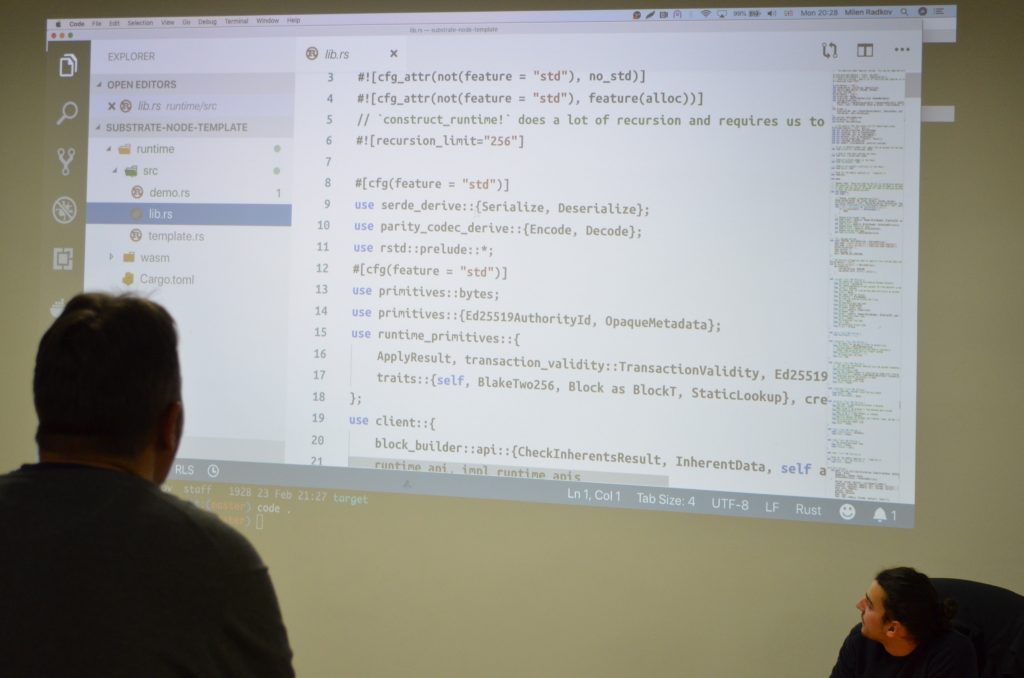Time goes by and this week we have reached the time for our 3rd Polkadot meetup.
We are always happy to share with our community cutting edge technologies and best practices when using specific tools and protocols.

Parachains and Smart Contracts
This time the focus was on parachains and more specifically how they differ from the typical smart contracts, that we all are used to. What are the benefits? How to develop them and what are they good for?
Milen Radkov had prepared for us some exciting presentation. Let’s find out!
For those of you who could not attend we would like to give you the meetup plan. This time we had 2 parts. On the first
We started with the well know to all blockchain developers Smart Contracts functions. When we think about it – it is really cool that one can write a dApp and push it to the network without permission, knowing that this app will live “forever” without worrying that somebody is going to change his logic, but we all know that the current solutions are not perfect. We are also limited by the computational complexity and the price that we have to pay for it. Not to mention that your code is good to go forever but only on one chain.
So what are the alternatives?
And why are we excited to follow the development of projects like Polkadot.
- In Polkadot transactions are unmetered /so you can have extremely complex state transition functions and never have to think about running out of gas/
- Parachains are like building your own blockchain and not have to think about security, because of the shared security mechanism that Polkadot provides
- One can trust the Polkadot validator set that they are securing the chain
- Interoperability – you can message between all the different
parachains /message passing/ async
In the second part of the meetup, we deep dived into the code to discover the advantages of using Polakot and Substrate. For those of you who are new to Polkadot, Substrate is a framework allowing us to build entirely new blockchain only in few commands, stepping up on Polkadot’s development and helping us developers to focus on our business logic.

During the code review, Milen showed us how quick it is to run a custom
He walked us trough the code and explained briefly with the syntax and structure of the substrate project.
Watch the recording of the session here:
Resources
Also published on Medium.
![Cover Image for Parachains and Smart Contracts – 03. [Sofia Polkadot]](/_next/image?url=https%3A%2F%2Fwp.web.hack.bg%2Fwp-content%2Fuploads%2F2019%2F02%2FDSC_0553.jpg&w=3840&q=75)


